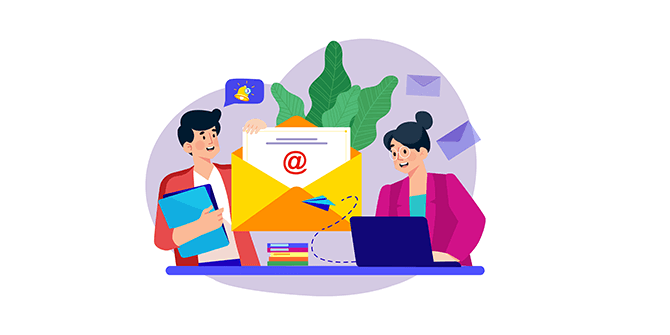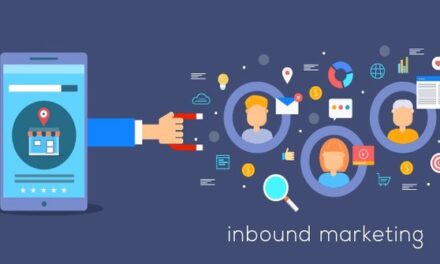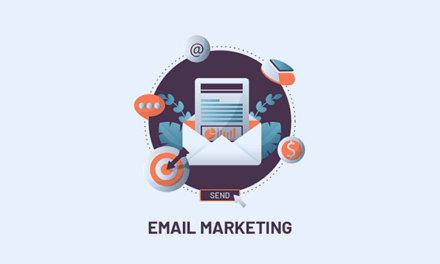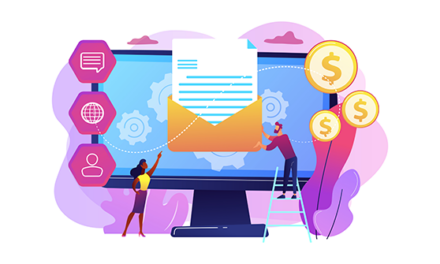Key Takeaways
- BASHO emails are personalized and targeted, focusing on the recipient's needs and interests.
- Effective BASHO emails involve detailed research, engaging subject lines, personalized content, and clear calls to action.
- The BASHO method is versatile and suitable for various industries and communication scenarios.
- Using BASHO emails enhances engagement with decision-makers, improves response rates, and fosters stronger business relationships.
In the dynamic world of business communication, the term ‘BASHO email’ has emerged as a game-changer. But what exactly is a BASHO email, and why is it revolutionizing how we connect with key decision-makers?
Originating from the concise elegance of the Japanese poet Basho, this approach embodies precision and personalization in email marketing.
This guide delves into the art of crafting BASHO emails, a technique that stands out for its targeted and impactful approach.
From understanding the BASHO email structure to exploring real-world BASHO email examples and templates, we unravel the secrets behind this powerful communication tool.
Whether you’re curious about what BASHO stands for or seeking to master the BASHO email technique, this guide is your gateway to improved business communication and engagement.
So, buckle up as we embark on this journey to unravel the secrets of BASHO emails, a technique not just about sending emails but also about building bridges and opening doors to unparalleled business opportunities.
- What is a BASHO Email?
- What does BASHO email stand for?
- Why are BASHO emails important?
- When to use BASHO emails?
- How to write an effective BASHO email? [Tips Included]
- Benefits of using a basho email
- Crafting a BASHO email sequence for successful email campaigns
- 12 BASHO email examples and templates that you can use
- Conclusion
What is a BASHO Email?
A BASHO email is a highly personalized cold email specifically designed to capture the attention of key decision-makers. Unlike standard marketing emails, a BASHO-style email is crafted to address its recipient’s specific needs, interests, and challenges.
What does BASHO email stand for?
While ‘BASHO’ doesn’t mean anything in the acronymic sense, it symbolizes a focused and personalized approach to email communication.
The BASHO email technique is about making a robust and immediate connection with the recipient, using a tailored message that resonates personally and professionally.
It’s about understanding the recipient so that the email reads less like a generic sales pitch and more like a one-to-one conversation.
Why are BASHO emails important?
For several reasons, BASHO emails are crucial in today’s saturated digital communication landscape. Firstly, they cut through the noise of generic email blasts, offering a personalized touch that is rare in mass email campaigns.
This personalization leads to higher open and response rates, as recipients are more likely to engage with content that is relevant and specific to their interests and needs.
Furthermore, BASHO email approaches are particularly effective in B2B communication, where building relationships and establishing trust are key to business success.
They allow for a more authentic connection, which is essential in reaching high-level executives and decision-makers.
When to use BASHO emails?
Basho emails are particularly effective in situations where a personalized approach is crucial.
It includes:
1. Reaching high-level decision-makers: When trying to connect with C-suite executives or key stakeholders who are typically hard to engage due to their busy schedules and high volume of generic email communications.
2. In complex sales processes: Understanding a potential client’s specific needs and challenges is crucial to presenting your product or service as a solution.
3. For relationship building: In scenarios where establishing a long-term relationship is more beneficial than a one-off sale, such as in account-based marketing strategies or B2B sales strategies.
4. When targeting niche markets: Where a deep understanding of the market and its unique challenges is necessary to communicate effectively.
How to write an effective BASHO email? [Tips Included]
Writing an effective BASHO email is a skill that combines personalization, strategic research, and clear communication.
The essence of a BASHO email is to connect with the recipient by addressing their specific needs and interests in a manner that stands out from the typical influx of generic emails.
Here are the 7 steps that you must consider to craft a BASHO email that resonates and elicits a response:
1. Conduct thorough research
The first step in writing a BASHO email is thoroughly understanding your recipient. It means going beyond surface-level information to understand their business role, industry challenges, recent achievements, and personal interests.
This research forms the backbone of your email’s personalization, allowing you to tailor your message in a directly relevant way to the recipient.
2. Craft a captivating subject line
The subject line is your first impression and is crucial to your email’s opening. It should be compelling and personalized, hinting at the value or relevance of the email’s content.
A good BASHO email subject line often includes a reference to something specific and relevant to the recipient, making it clear that the email is not a generic blast.
3. Personalize the opening line
The opening line of your BASHO email should immediately engage the recipient. It could be a reference to a recent business development, a mutual connection, or a shared interest.
The goal is to demonstrate that you have written this email specifically for them and it’s not part of a mass email campaign.
4. Clear and concise value proposition
In the body of the email, it’s essential to be clear and concise about how your product, service, or proposal aligns with the recipient’s needs or challenges.
This is where your research pays off. Tailor your message to address how you can help them specifically, focusing on the benefits rather than just features. The BASHO email technique is about connecting, not just selling a product.
5. Include a clear call-to-action (CTA)
Conclude your email with a clear call to action that guides the recipient towards the next step. Whether scheduling a meeting, making a phone call, or requesting further information, your CTA should be direct and easy to follow.
Avoid multiple CTAs, which can dilute the message and lead to indecision.
6. Keep it professional
BASHO emails should be brief and to the point. Respect the recipient’s time by keeping your email concise and focusing on the most critical issues.
Ensure that the tone is professional and aligns with the nature of your relationship and the recipient’s corporate culture.
7. Proofread and test
Before sending out your BASHO email, it’s crucial to proofread errors and ensure appropriate tone and content.
Additionally, consider A/B testing different email elements, such as the subject line or CTA, to determine what works best with your target audience.
Benefits of using a basho email
The basho email approach, named after the Japanese haiku poet, has become a significant tool in business communication.
Its focus on personalization and relevance offers a range of benefits that can transform how businesses engage with clients, partners, and prospects.
Here’s a detailed look at the advantages of using basho emails:
1. Enhanced personalization and relevance
The core of a basho email is its personalized nature. By tailoring the content specifically to the recipient’s interests, challenges, and business context, basho emails demonstrate a level of care and attention that generic emails cannot match.
This personalization makes the recipient feel valued and understood, increasing the likelihood of engagement.
2. Higher open and response rates
Due to their personalized and relevant subject lines and content, basho emails typically enjoy higher open and response rates than standard marketing emails.
Recipients are more inclined to open an email specifically written for them, addressing their unique needs or situations.
3. Effective in reaching decision-makers
Basho emails are particularly effective in reaching high-level decision-makers. These individuals often receive overwhelming emails daily, and a personalized, well-researched basho email can stand out amidst the clutter.
By directly addressing the issues and challenges relevant to these decision-makers, basho emails can capture their attention where generic emails fail.
4. Builds stronger relationships
The basho email technique is not just about making a sale; It’s about building a relationship. By showing that you have taken the time to understand the recipient and their business, you lay the groundwork for a relationship based on trust and mutual understanding.
It can be particularly beneficial in B2B contexts, where long-term relationships are key.
5. Facilitates targeted messaging
Basho emails allow for highly targeted messaging. By focusing on each recipient’s specific needs and interests, you can tailor your message to be as effective as possible.
This targeted approach ensures that your message is relevant and resonates with the recipient, increasing the chances of a positive response.
6. Efficient use of resources
While crafting a basho email may require more initial effort in research and personalization, it is generally a more efficient use of resources.
It is because the higher engagement rates of basho emails can lead to better conversion rates and more successful outcomes, as opposed to sending out large volumes of generic emails with low engagement.
7. Enhances brand image
Using basho emails can positively impact your brand identity. It shows that your company values personal connection and will go the extra mile to address individual needs.
It can set you apart from competitors and position your brand as thoughtful and customer-centric.
8. Adaptable across various industries
The basho email approach is versatile and can be adapted to suit various industries. Whether it’s tech, finance, healthcare, or any other sector, basho emails can be tailored to meet each industry’s specific communication norms and expectations.
Crafting a BASHO email sequence for successful email campaigns
Implementing a basho email sequence is a strategic approach to enhance the effectiveness of your email campaigns. This sequence involves a series of thoughtfully crafted emails, each serving a specific purpose and building upon the previous one.
Here’s how to structure a basho email sequence to maximize your chances of success:
1. Initiating with the first contact email
The first email in your BASHO sequence is crucial. It should introduce you and your purpose but, more importantly, focus on the recipient. Utilize your research to create a personalized message that resonates with their needs or interests.
The subject line should be attention-grabbing and relevant to the recipient, while the content should be concise, highlighting how your offering aligns with their goals or challenges. This first contact is not about making a sale but about sparking interest and laying the groundwork for a relationship.
2. Adding value to the follow-up
Your second email, the ‘value add,’ should build on the initial contact. Here, provide additional information or insights that are relevant and beneficial to the recipient.
It includes sharing a relevant case study, recent research findings, or an article that aligns with their business challenges. The focus should be on offering value, not just pushing for a response.
3. Employing the 1-2-3 email strategy
The third step in your basho email sequence is the ‘1-2-3 email.’ This format is straightforward and effective: Start with a brief recap of your previous emails, then list three key benefits or points that directly relate to the recipient’s needs or challenges.
This structure helps in clearly articulating the value proposition in a concise and digestible manner.
4. Utilizing a break email format
Consider using a ‘ break email ‘ if the previous emails haven’t elicited a response. This format involves sending a shorter, more direct email.
It often includes a statement or question that prompts the recipient to consider the missed opportunity or to reevaluate their position. The break email is a gentle nudge, reminding them of your previous communications and encouraging them to take action.
Each email in this BASHO sequence should be carefully crafted and timed. Maintaining a balance between being persistent and respectful of the recipient’s time and inbox is essential.
By following this structured approach, your BASHO email campaign can effectively engage recipients, build meaningful connections, and increase the chances of achieving your campaign goals.
12 BASHO email examples and templates that you can use
Implementing the BASHO sales methodology in your email campaigns can significantly enhance your outreach effectiveness. This approach, rooted in personalized and targeted communication, aligns well with various scenarios in the sales process.
Below are 12 BASHO email templates tailored to different situations, incorporating the BASHO sales technique, which you can adapt to fit your specific needs.
1. Initial outreach to a potential client
Subject: Congratulations on [Recipient’s Achievement] – A Thought for [Company Name]
Body:
Hi [Recipient’s Name],
I recently came across [specific achievement or news about the company] and want to congratulate you. It’s impressive how [particular detail about the achievement].
Best regards,
[Your Name]
2. Follow-up after a networking event
Subject: Great Insights on [Topic] at [Event Name]
Body:
Hi [Recipient’s Name],
It was a pleasure to connect at [Event Name]. Your thoughts on [specific topic] stood out to me. Reflecting on our conversation, I believe [Your Product/Service] could address [specific challenge or need they mentioned].
Would you be open to a brief call to discuss this further next week?
Best,
[Your Name]
3. Reaching out to a lost lead
Subject: Revisiting Our Last Chat About [Product/Service]
Body:
Hi [Recipient’s Name],
I’ve been thinking about our last conversation regarding [specific topic or product]. With [new feature or service update], I believe we could better meet your needs of [specific requirement or challenge].
Could we reconnect to discuss this in light of the new developments?
Regards,
[Your Name]
4. Post-demo follow-up
Subject: Reflecting on Our [Product/Service] Demo
Body:
Hi [Recipient’s Name],
Thank you for taking the time to explore [Your Product/Service] with us. I noticed your interest in [specific feature or aspect discussed during the demo]. I believe this could specifically help [Company Name] in [specific way].
Can we discuss the potential next steps?
Best,
[Your Name]
5. Checking in with a long-term client
Subject: Exploring New Avenues with [Client’s Company Name]
Body:
Hi [Recipient’s Name],
As we continue our partnership, I’ve been considering how [Client’s Company] could further benefit from [new feature or service]. This could be a game-changer for [specific area in their business].
Let’s discuss how this could integrate into your current setup?
Regards,
[Your Name]
6. Cold email to a high-value prospect
Subject: Enhancing [Prospect’s Company]’s Approach to [Industry Trend]
Body:
Hi [Recipient’s Name],
Following [Prospect’s Company]’s progress, I’ve been impressed by your approach to [specific industry trend or challenge]. Have you considered [solution offered by your product/service]? I see a significant opportunity for [specific benefit].
Could we discuss this in a brief call?
Best,
[Your Name]
7. Responding to a prospect’s concern
Subject: Addressing Your Query About [Product/Service]
Body:
Hi [Recipient’s Name],
Thank you for your honest feedback about [specific concern]. To address this, we have [solution or improvement]. I believe this aligns well with [their company’s needs].
Can we have a quick call to go over this?
Regards,
[Your Name]
8. Pre-meeting email
Subject: Ahead of Our Meeting on [Date]
Body:
Hi [Recipient’s Name],
Looking forward to our meeting on [date]. I’ve been thinking about how [specific topic or question] could significantly impact [their company]. Let’s explore this together.
See you then,
[Your Name]
9. Post-meeting thank you and next steps
Subject: Thanks for Today’s Insightful Meeting
Body:
Hi [Recipient’s Name],
Thank you for the insightful discussion today. I’m excited about the potential of [specific topic discussed]. As agreed, I’ll follow up with [next steps or information].
Looking forward to our next steps,
[Your Name]
10. Introducing a new product/feature
Subject: Introducing [New Product/Feature] at [Your Company]
Body:
Hi [Recipient’s Name],
I’m thrilled to introduce [new product/feature]. Given [Their Company’s] focus on [specific area], this could offer [specific benefit].
Could we discuss how this aligns with your current needs?
Best,
[Your Name]
11. Urging a decision
Subject: Finalizing Your Decision on [Product/Service]
Body:
Hi [Recipient’s Name],
I understand the importance of your decision regarding [product/service]. Considering [specific benefit or deadline], now might be the right time to move forward.
Can we finalize our discussions this week?
Regards,
[Your Name]
12. Re-engaging a dormant prospect
Subject: Exciting Updates from [Your Company]
Body:
Hi [Recipient’s Name],
Let’s catch up and discuss this?
Best,
[Your Name]
Each template is designed to leverage the BASHO sales method, focusing on personalization, relevance, and strategic follow-up. Remember to tailor each template to the specific context and recipient for maximum effectiveness.
Conclusion
In conclusion, the BASHO email approach is a powerful tool in business communication, particularly in sales.
BASHO emails offer a unique way to connect with decision-makers and critical prospects by emphasizing personalization, relevance, and strategic targeting.
The examples and templates provided illustrate the versatility and effectiveness of this method across various scenarios. Adopting the BASHO technique in your email campaigns can lead to higher engagement, stronger relationships, and, ultimately, more successful business outcomes.
As the business landscape evolves, the BASHO approach remains vital for anyone looking to enhance their communication strategy and sales process.




